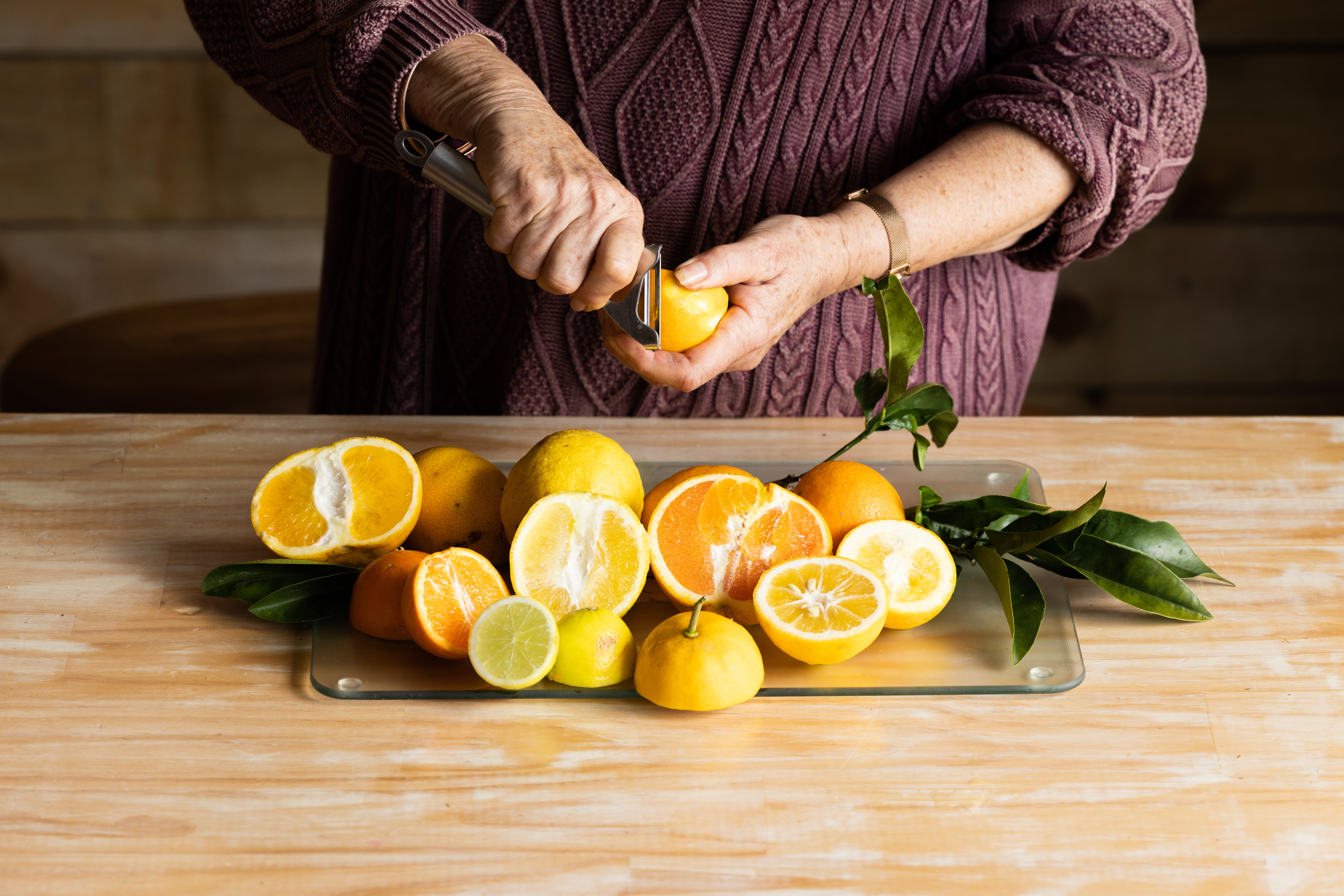Making an orange liqueur is easy and rewarding—especially if you already distil the main ingredient of this recipe yourself—eau de vie. If you’ve completed The Alembics Lab’s Foundation Course in Distilling Alcohol you may well have some high-quality eau de vie ready for use.
Orange, and in particular bitter orange (Citrus x aurantium) is a botanical with a plethora of aromatic applications—as detailed in our Encyclopedia Botanica—and it features in many famous aromatic spirits and digestifs. If you enjoy entertaining and like to serve liqueur after a delicious dinner you should definitely try making your own. Orange liqueur is also great in both deserts and savoury poultry dishes, or added to pre-dinner cocktails and spritzes.
We usually use bitter orange in this recipe, but you can modify this recipe in any way you like by trying other citrus fruits, or by adding a few cloves or honey. Ignite your imagination but remember—use spices sparingly.
Although the still used in this guide is an appliance still you may use any type of still for this distillation process.
Orange Liqueur
- Thinly slice 6 whole oranges and lay evenly on the bottom of a pie dish. Sprinkle with 1 Tbsp of brown sugar.
- Pour 500ml of eau de vie over the orange slices and sprinkle with another Tbsp of brown sugar and allow to stand overnight so the flavours marry.
- The next day, using a 2.5L Appliance Still or a 2.5L Alquitar, pour all the liquid from your mixture into the copper pot.
- Place your orange slices on the sieve plate. This will allow the rising vapours to mingle with the orange slices thereby enhancing the flavour even further.
- Assemble the still by attaching it to the condenser bucket. Have your recirculation pump set up so cold water is flowing around the condenser throughout the distillation.
- Adjust the temperature control of the hotplate to its highest position initially. Check the temperature of the copper tubing near the brass fastener regularly, and once you find that you can no longer hold the copper tubing it’s a sure sign the hot vapours have begun the distilling run. Lower the temperature control and maintain a slow and steady distillation.
- Check the taste when you have collected 300ml and continue to keep taste checking. When the taste is bland with no flavour or spirit, turn off the still.
Enjoy your liquid gold.
—by Jess Culpan




